Meru people and their Culture in Kenya
The Meru people, or Ameru, are a Bantu ethnic group who mainly inhabit the Meruregion of Kenya. They speak Kimîîru language.
The Meru people of Kenya should not be mistaken with the Meru of neighboring Tanzania, or Wameru.
Location
The Meru are a community living on the fertile agricultural north and eastern slope of Mount Kenya, in the former Eastern Province of Kenya.
The name "Meru" refers to both the people and the location, as for many years there was only one geo-political district for the Meru people which originated from the colonial land unit.
This changed in 1992, when the district was divided into three: Meru, Nyambene, and Tharaka-Nithi.More districts have been created since then as of May 2009 the Meru region consisted of twelve (12) districts.
In all the Meru region consists of approximately 13000km² stretching from River Thuci in the South which is the traditional boundary between the Meru and Embu people to Isiolo district in the north.
However the northern border is not as clearly defined as the southern border .
The Kenyan Ameru are unrelated to the Meru people in north Tanzania, other than that they are both Bantu-speaking.
The Meru are primarily agrarian, with some animals kept mainly in the northern part of the region. Their home life and culture is similar to other Highland Bantus. The Tharaka live in the dry desert area, a much harsher life than most Meru. they also live in other parts of Kenya.
Meru people are divided into seven sections; namely, the Igoji, Imenti, Tigania, Miutuni, Igembe, Mwimbi and Muthambi, Chuka and Tharaka
The Meru were traditionally governed by elected and hierarchical councils of elders from the clan level right up to the supreme Njuri Ncheke council that governed all the seven sections. The council is the only traditional judicial system recognized by the Kenyan state and is still powerful when it comes to political decision making amongst the Meru.
The Tanzanian Wameru settled in the forest on the south eastern slopes of Mount Meru.
History of the Meru People in Kenya
Meru of Kenya say that, before they settled in their present land, they had came from the North, ruteere rwa urio. This correlates with the oral history of other closely related groups such as the Kikuyu, Kamba and Embu who may have come from the north or south following the Bantu expansion from Central Africa.
Meru of Tanzania, or Wameru people, have shared the slopes of Mount Meru with the Waarusha people for about 300 years. Wameru came first. They were established on the slopes of Mount Meru before Waarusha arrived in the 1830s. Waarusha and Wameru cleared and settled most of the south eastern slopes of Mount Meru. In the 1880s, a series of disasters swept across northern Tanzania, driving the Maasai into the slopes of Mount Meru.
Education of the Meru People in Kenya
 Education of the Meru People in Kenya
Education of the Meru People in KenyaMeru have had a strong educational foundation provided by Christian mission schools and are among the most influential ethnic groups in Kenya. The main education institutions were started or sponsored by churches notably Catholic, Methodist (the dominant church in the region) and Presbyterian.
One of Kenya's new gems in the education sector, Kenya Methodist University (KEMU) was awarded its Charter on June 28, 2006 by His Excellency President Mwai Kibaki. The coming of KEMU in Meru was a long process in educational planning and development.
The Kenya Methodist University came as a logical step toward educational excellence as the focus of the Church in pursuance of its holistic Gospel. However, the University was not established as an isolated project.
At least two institutions namely; Kaaga Rural Training Centre and Methodist Training Institute consecutively formed the basic foundation, in form of physical and other infrastructure in the establishment of Kenya Methodist University.
In addition, this area has numerous centres of learning that include primary and secondary schools, some of which are among the best in the country. The Kenyan Government have come in to complement the areas education endeavours with the establishment of Chuka University.
The generous Presbyterian Church donated the 45 acres (180,000 m2) of land where the University seats which initially hosted Ndagani primary, Secondary and a Rural polytechnic. Since the new development many private institutions are coming up and the Ndagani area is set to be the Educational centre of the Meru people.
Languages of the Meru People in Kenya
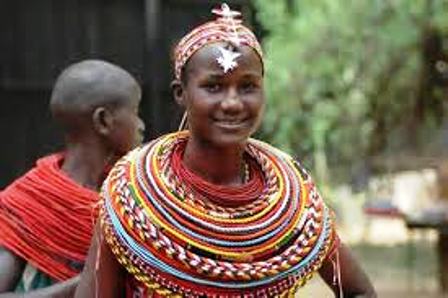 Languages of the Meru People in Kenya
Languages of the Meru People in KenyaThe Bantu Meru, Embu and Kikuyu are understandable to one another, with some differences; nevertheless they are mutually intelligible and can be used across the groups.
The Meru speak at least seven different dialects with the southern dialects being very close to Kikuyu and the Northern dialects showing some Cushitic tendencies, but the Bible translation being used is in the Imenti dialect.
The differences in the dialects reflect the varied Bantu origins and influences from Cushite and Nilotic, as well as different Bantu, neighbors. As a whole Meru exhibits much older Bantu characteristics in grammar and phonetic forms than the neighboring languages.
Family traditions of the Meru People in Kenya
In traditional rural areas the Meru have fairly strict circumcision customs that affect all of life. From the time of circumcision, boys no longer have contact with their mother. A separate house is built for the sons.
This does vary to some degree depending on the level of urban influence, but is still practiced in some parts of Meru region. Traditionally, girls would also undergo circumcision, but this practice has been abandoned.
Identity of the Meru People in Kenya:
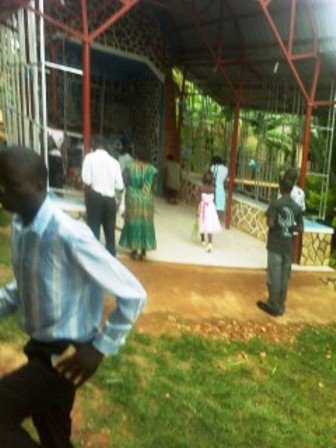 Identity of the Meru People in Kenya:
Identity of the Meru People in Kenya:Since the language of the Meru people is a Bantu language, they have traditionally been classified as Bantu. Some studies on Meru history shows some of the Meru are Cushitic in origin.
Language history can be more easily reconstructed, but ethnic merging is more subtle. Insights are provided by the complex oral traditons of multiple origins. The Meru groups themselves have multiple myths or legends of origin, indicating they are actually of mixed origin.
Some claim an origin from the north or west, while others claim coastal origins. Cushites referred to as Mwoko in Meru traditions were already living there when the Bantu groups arrived in the Mt Kenya area in various stages of migration. Other Bantu-speaking peoples in central Kenya have a multiple origin.
This is, in fact, the case with most peoples of the Eastern Africa region, which has experienced a swirl of movement and settlement, displacement and resettlement, through all the oral and recorded history we know.
All the Bantu languages of the Mt Kenya region are very similar, as well as cultural patterns. The Meru are most closely related to the Chuka, but share many similarities with the Embu and Kikuyu as well.
Political Situation of the Meru People in Kenya:
In the past the Meru were in a coalition with the Embu and Kikuyu which yielded some political power. The coalition, called Gikuyu-Embu-Meru Association (GEMA), is not as strong as it once was, but the Meru typically voted with the opposition.
This does vary from location to location, but would generally hold true. Developments under the multi-party experiment since 1992 renewed an informal political alliance between GEMA peoples and much of the Luo "community." It is not clear how the political situation of position of the Meru has been affected by the political-ethnic violence that scoured Kenya in the first half of 2008.
Customs of the Meru People in Kenya:
The Meru have fairly strict circumcision customs that affect all of life. From the time of circumcision, boys no longer have contact with their mother and girls no longer have contact with their father.
A separate house is built for the sons and the mother leaves their food outside the door. This does vary to some degree depending on the level of urban influence, but is still practiced in Meru town. This is one of the major reasons that all secondary schools in Meru are boarding schools.
The Meru are primarily agrarian, with some animals. Their home life and culture is similar to other Highland Bantus. The Tharaka live in the dry desert area, a much harsher life than most Meru. Meru have had a strong educational foundation has been provided by Christian mission schools
Religion/Christianity of the Meru People in Kenya:
Traditionally, the Meru followed persons called "Mugwe" who served as a prophet and spiritual leader. Mugwes still exist today but are said to have only an ornamental purpose.
In the days of mission comity agreements, Meru was given to the Methodists. Methodism has therefore become the primary religion of the region. In many cases, church membership is a cultural rather than spiritual matter.
Even within the Methodist Church, three groups are recognized:
Christians -- all church members,
Followers -- those members who are "saved", and
the Team -- those saved members who are into the "deeper life."
Most see this division as resulting from the East African Revival movement which started in the early 1930's. Researchers report the Meru to be 45% Christian.
Baptist and Pentecostals have experienced fairly active response in recent years. Much effort is being given to leadership training. Training workers report that one frustrating hindrance to training and church development has been a political power attitude by church leaders.
More about Afican Culture
Kenya Culture | Akamba | British Colonialists | Crafts | Cultural Business Meetings | Cultural Communication | Cultural Eye Contact | Cultural Gestures | Gift Giving | Cultural Law | Cultural Music | Cultural Space | Cultural Time | How to Talk in Kenya |
Recent Articles
-
Garam Masala Appetizers ,How to Make Garam Masala,Kenya Cuisines
Sep 21, 14 03:38 PM
Garam Masala Appetizers are originally Indian food but of recent, many Kenyans use it. Therefore, on this site, we will guide you on how to make it easily. -
The Details of the Baruuli-Banyara People and their Culture in Uganda
Sep 03, 14 12:32 AM
The Baruuli-Banyala are a people of Central Uganda who generally live near the Nile River-Lake Kyoga basin. -
Guide to Nubi People and their Culture in Kenya and Uganda
Sep 03, 14 12:24 AM
The Nubians consist of seven non-Arab Muslim tribes which originated in the Nubia region, an area between Aswan in southern
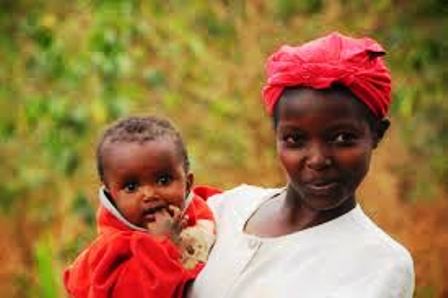
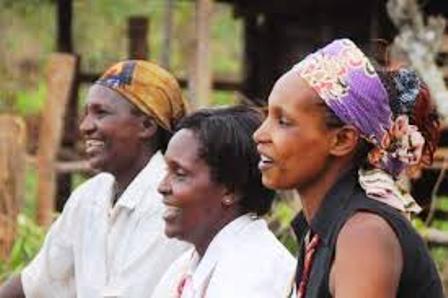
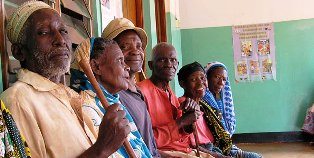
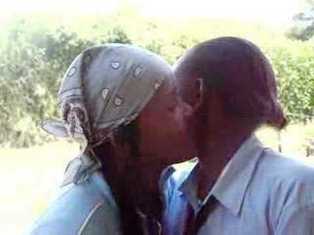
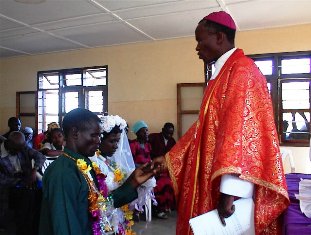







New! Comments
Have your say about what you just read! Leave me a comment in the box below.